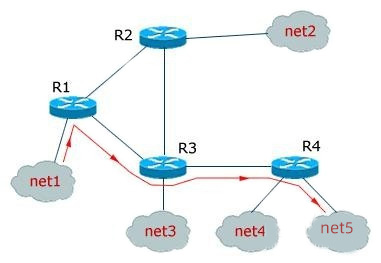An industrial router is a network device that connects multiple networks or segments. Industrial router can "translate" the data information between different networks or segments so that they can "read" each other's data, thus forming a larger network. The industrial router is the major node device of Internet. Industrial routers determine the forwarding of data by routing.

1) Generate and maintain routing table dynamically;
2) Find the routing table according to the IP address information in the received packet, and determine the best route for data forwarding;
3) Data forwarding.

The industrial router works at the third layer of the OSI seven-layer protocol. Its main task is to receive a packet from a network interface, and decide the address to forward to the next destination according to the address of the destination contained in the packet. Therefore, the industrial router first has to look up its destination address in the forwarding routing table. If the destination address is found, the next MAC address is added before the frame of the packet. Meanwhile, the TTL (Time To Live) domain of the IP data packet header is reduced and the checksum is recalculated. When packets are sent to the output port, they need to wait in order to be transmitted to the output link.
The industrial router can look up the routing table in the device according to some routing communication protocol when it works. If there is more than one path to a particular node, the basic pre-determined routing rule is to choose the optimal (or most economical) transport path. Because various network segments and their interconnections may change due to environmental changes, the routing information is generally updated regularly according to the provisions of the routing information protocol used.
In general, the main work of industrial routers is to store and forward packets. The specific process is as follows:
1) When the packet arrives at the industrial router, according to the type of network physical interface, the industrial router invokes the corresponding link-layer functional module to interpret the link-layer protocol header for processing the packet. This step is relatively simple and mainly validates the integrity of the data, such as CRC check and frame length check.
2) After the link layer completes the integrity verification of the data frame, the industrial router begins to process the IP layer of the data frame. This process is at the heart of the industrial router's capabilities. According to the destination IP address of IP packet header in the data frame, the industrial router looks for the IP address of the next hop in the routing table. At the same time, the TTL (Time To Live) domain of the IP data packet header begins to decrement and recalculate the Checksum.
3) According to the next hop IP address found in the routing table, IP packets are sent to the corresponding output link layer, encapsulated with the corresponding link layer header, and finally sent through the output network physical interface.
Routing Table |
|||||||
| R1 Routing Table | R2 Routing Table | R3 Routing Table | R4 Routing Table | ||||
|
Destination site |
IP Address of the Next Hop |
Destination site |
IP Address of the Next Hop |
Destination site |
IP Address of the Next Hop | Destination site |
IP Address of the Next Hop |
| net1 | R1 | net1 | R1 | net1 | R1 | net1 | R3 |
| net2 | R2 | net2 | R2 | net2 | R2 | net2 | R3 |
| net3 | R3 | net3 | R3 | net3 | R3 | net3 | R3 |
| net4 | R3 | net4 | R3 | net4 | R4 | net4 | R4 |
| net5 | R3 | net5 | R5 | net5 | R4 | net5 | R4 |
The main job of the industrial router is to find an optimal transmission path for each packet passing through the industrial router and effectively deliver the packet to the destination site. From this point of view, the selection of optimal path strategy or the selection of optimal routing algorithm is the key to industrial routers. To finish this task, the Routing Table containing data on various transport paths is stored in an industrial router for use during routing selection. The above process describes the main and critical working process of the industrial router, but does not describe other additional performance, such as access control, network address translation, queuing priority, and so on.

